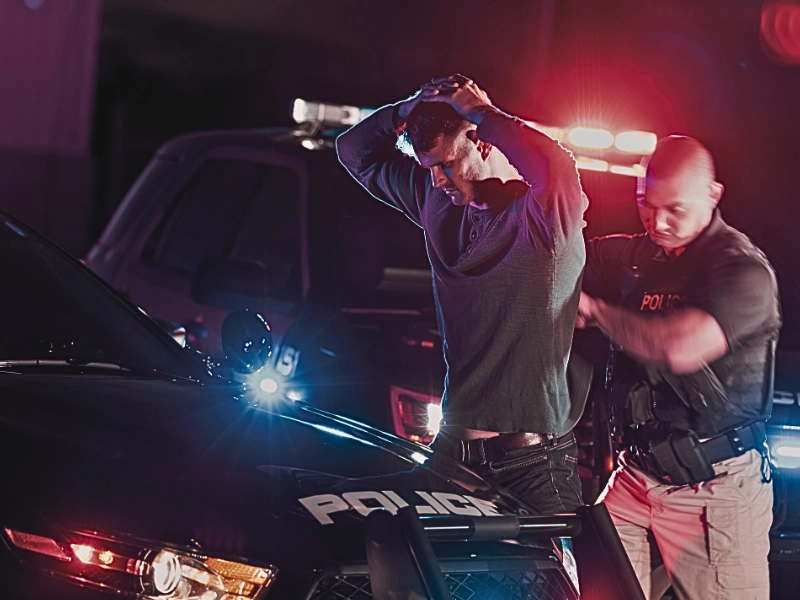In most cases, shooting a police officer can result in serious legal penalties that range from probation to life imprisonment. The penalties depend on the facts of the case and any prior criminal history of the defendant. A conviction may also come with mandatory restitution — the court orders the convicted person to compensate the victim for injuries or damages.

Table of Contents
Common Defenses Against Shooting a Police Officer on Duty in Minnesota
The Minnesota statutes that govern assault crimes don’t specify whether the victim must be an on-duty or off-duty police officer. Prosecutors may, however, prevail in cases brought against someone for shooting a police officer by proving that the defendant knew or should have known that the victim was an on-duty or off-duty police officer.
A criminal attorney who is familiar with Minnesota laws regarding killing or harming a public officer can help a defendant get the charges dropped or significantly reduced. The attorney can build a strong defense strategy that may include:
Self-Defense
The criminal defense of self-defense is available as a complete defense against charges of assaulting, threatening with bodily harm, or injuring anyone if the defendant’s actions intended to prevent or terminate an unlawful interference. A person may use the degree of force that the person reasonably believes is necessary to prevent or terminate the interference. “Unlawful” means outside the scope of authority given by law and, in this context, would include a police officer acting outside his or her legal authority.
Defending Property and/or Other People
A defendant may also claim that the actions were in defense of property and/or other people. This defense is typically used if the act ensued during the commission of another crime, such as burglary. The defendant must show that he or she reasonably believed that it was necessary to protect himself or herself against the imminent unlawful force.
Insanity Defense
The insanity defense applies if the defendant can demonstrate beyond reasonable doubt that he or she had a serious mental illness or disorder when he or she shot the cop. In this defense, the defendant couldn’t tell right or wrong when the defendant committed the crime. The defendant could also have had an irresistible urge to commit a crime.
Intoxication or Lapse of Judgement
Another defense is intoxication. The defendant, however, must have been considerably intoxicated at the time of the crime. This defense aims to show that the defendant lacked substantial capacity to remember events, know their nature, or judge whether his or her actions were wrong.
Penalties for Shooting a Police Dog
Any person who maliciously and without justifiable reason causes the death of, or great or substantial bodily harm to a police dog, a search and rescue dog, or an arson dog through shooting may face a five-year jail sentence. A violation of this nature may be considered a felony, misdemeanor, or gross misdemeanor.
An offense may be deemed a felony if the offender caused harm as the dog engaged in law enforcement, firefighting, correctional investigation, or apprehension. This applies especially if the dog got shot while under the control of a trained handler, a peace officer, or a correctional facility employee. A person convicted of a felony for shooting a police dog may serve a jail sentence of up to two years or pay a fine of up to $5,000, or both.
Mandatory Restitution
The court may require the defendant to make restitution for damages or injuries resulting from the crime. These damages may include the medical expenses of the police dog, its handler, and others. The offender may also have to pay for costs associated with the replacement of the dog.
The Most Common Defenses Against Shooting a Police Dog in Minnesota
Unawareness of the Dog’s Status
The most common defense against shooting a police dog is that the individual was not aware of the dog’s status. For this defense to be valid, the defendant must work closely with a criminal attorney to show that he or she couldn’t have reasonably known the animal was a police dog while it was under the control of first responders.
A criminal defense attorney can help a person who shot a police dog in Minnesota avoid conviction by demonstrating that:
- The dog wasn’t wearing a collar and leash while it was under the control of the handler;
- The dog wasn’t wearing the minimum protective armor specified by law;
- The alleged offender couldn’t have reasonably known that he or she was shooting at a police dog; and
- The alleged offender shot at the dog because of the force or fear it exerted.
Self-Defense
This defense requires the defendant to show that he or she reasonably believed force was necessary to protect himself or herself from the police dog. The defendant should show that the amount of force used was reasonable.





